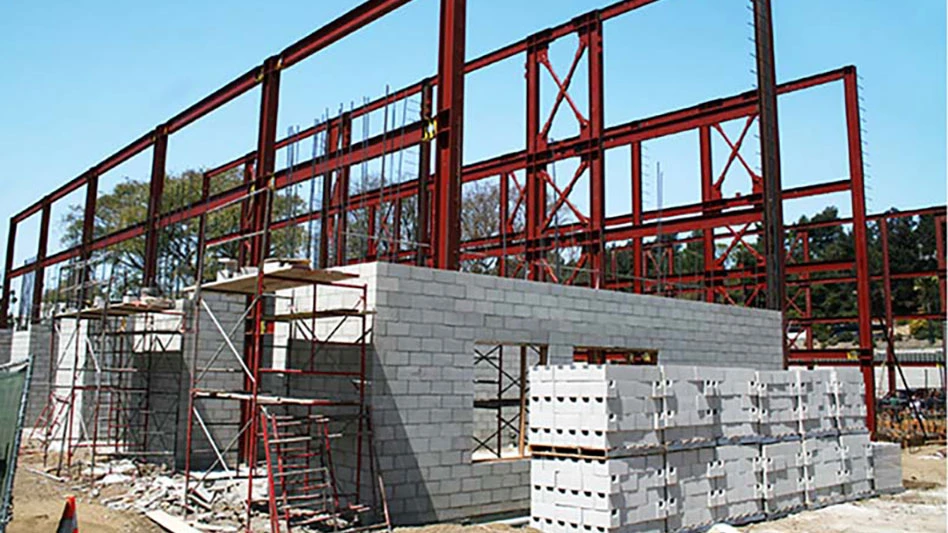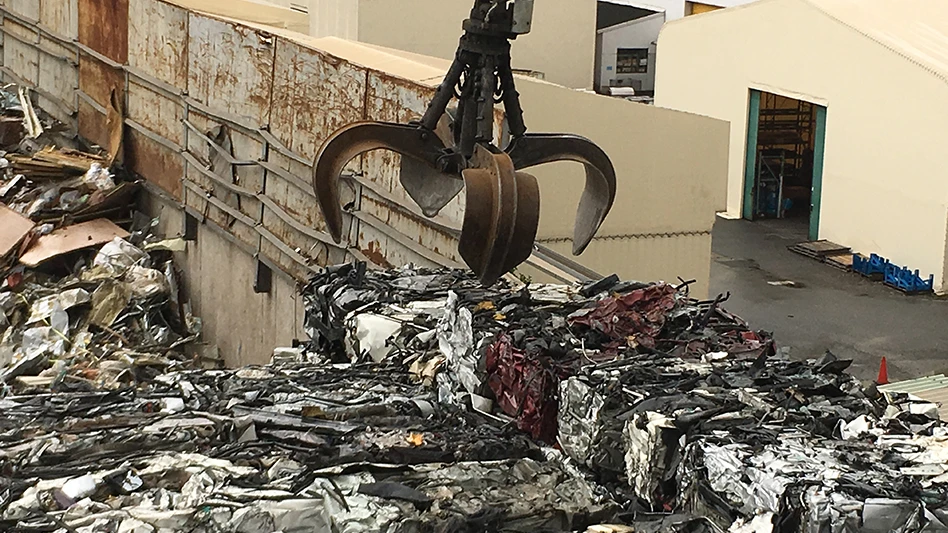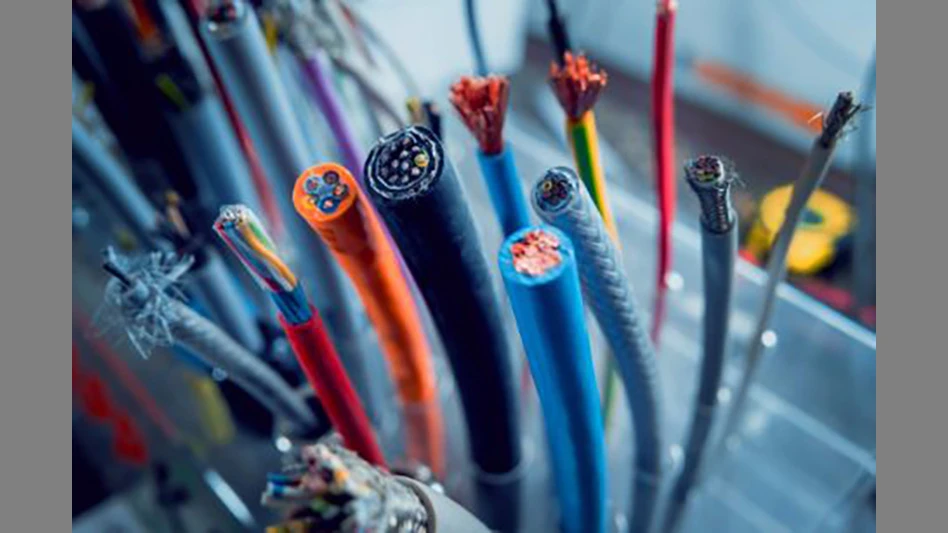Resource recovery is still the fastest growing of all environmental markets. Are scrap recyclers ready to face some dramatic changes in the lay of the land as a new century approaches?
The urge to merge -- does it heat up when times are tight, or do firms have more incentive to get together when business is good and cash is flowing?
Across the scrap and recycling industries, forecasts show that the boom in mergers and acquisitions may have reached its peak. The odds are good that the activity will slow down in the next few years.
Dan Schechter, vice president and head of the environmental practice at LEK/Alcar Consulting Group, Los Angeles, says their statistics have shown that each year there have been more deals -- both in terms of total dollars and in the numbers of mergers and acquisitions. "It’s just been skyrocketing over the past six years," he says. "But the rate is slowing down, reaching a plateau."
According to LEK/Alcar figures, 406 deals were announced in 1993 and at least 611 deals took place, including 205 deals, primarily in the solid waste sector, for which the target was not identified. Deal activity grew 51 percent over the years from 1987 to 1993, excluding small solid waste deals. Activity in 1993 grew five percent over 1992 levels. Top states for acquisitions were Texas and California.
Schechter says he expects 1994 figures, when fully compiled, to be about equal to 1993’s. Further out on the timeline toward 1997, he expects figures to drop a bit.
There is hardly a small operation in existence that doesn’t have the word "buyout" printed in green, dollar-bill style type in the back of the owner’s mind. If the company is young at heart and aggressive, the owner is looking to buy out operations which allow entry to new ventures or where management is retiring. If the business is struggling or the offer is rich enough, being bought out is an attractive alternative to the travail.
Big drivers in the merger and acquisition game have been the unbelievably fast rate of growth in an industry which was just a fraction of today’s size 10 years ago.
Nearly as important was the huge number of small organizations which provided a fertile supply of mom-and-pop labs and engineering outfits to be bought out. Conventional wisdom says medium size companies have the option of getting larger or of being bought out.
Those on the acquisition trail show every indication of continuing on that route. "Very much so," agrees Bill Kaiser, chief financial officer of N.E. Source, Brooklyn, N.Y. "Successful companies have found out that an integrated model is a help. You need to control the generator of waste, feed it to your property, and move it through your marketing arm. It is more effective that way. I could almost lose money on the collections side and make it up on the other end."
Frank Romanelli, president of IMCO Recycling, Irving,Texas, is also looking to expand. "We are looking for value. We have a core business -- recycling aluminum scrap and dross -- and it is on a five-year growth curve. We want to continue that growth, whether it is building new facilities or purchasing existing ones," he explains.
In the past year, IMCO Recycling purchased a can recycling plant in Corona, Calif., from Thakar Aluminum Corp., and purchased Phoenix Smelting Corp., owner of Metal Resources, Inc., which operates an aluminum recycling plant near Knoxville, Tenn.
"We’re always on the lookout for opportunities, especially in new geographic areas," he continues. But, he admits, it is getting tougher to find those opportunities.
Technology is playing a role in forcing smaller companies to get big or join with larger players. Technology, by its nature, is expensive and sophisticated. Larger players can source their technology or have the money to buy it. They have the resources to acquire expensive technology. They have the in-house infrastructure to service it and the volume to maintain it.
"For the medium-size firm, there is a lot of attraction to merge," agrees Bob Garino, director of commodities with the Institute of Scrap Recycling Industries. "But that is not unusual for this industry or other industries."
There is little question that mom-and-pop operations are having a tough time if they are not in a niche market. The right spot for survival in this whale-eat-minnow business would be to have a definite specialty and an established customer base.
But there is a spot for small dealers, maintains Jake Farber, president of Alpert & Alpert Iron & Metal, Los Angeles. "They can service accounts better and cheaper than we can, especially when they are buying half- or quarter-truckloads. We can’t afford to send a truck out for a load that size, but they will do well with it."
PROFITABILITY
"It’s a hard economic fact of life that larger companies (over $100 million in sales) are more profitable than small ones," Schechter says. Environmental consulting is the only exception to that rule. "Larger companies are more sophisticated," he continues. "The market is more demanding and the customers’ needs are more sophisticated, so large size can help."
As industry growth rates have tapered off, smaller companies have seen profitability dwindle. Firms in the $10 million range are getting closer to break-even and can not survive unless something is done to reverse the trend. For this reason, they are attractive targets for larger firms to gobble up.
It’s no accident that the average acquisition price in 1993 was $20 million, when excluding small solid waste deals. Stock-only or cash-only transactions were the most frequently used methods of payment for acquisitions, accounting for two-thirds of the deals in 1993.
Weyerhaeuser Co., Tacoma,Wash., has done its share of helping the growth. In 1994 alone, they purchased CC&C Recycling, Des Moines, Iowa; Recycle USA, Phoenix; and Metro Paper Recovery, Inc., St. Paul, Minn. Today, the firm has 27 plants in the United States and Canada, according to Weyerhaeuser’s Jason Plut. And they intend to continue growing, says Plut.
"Every five years since 1974 we have doubled our capacity." he says. "We did 200 million tons on 1994 and expect to do 300 million tons by 1996. We expect that growth to continue."
Indeed, Weyerhaeuser Recycling is the company’s fastest growing business. "We continue to look for acquisition candidates," Plut says, "in particular, for those companies which have high standards of service, quality and integrity. We pass up a number of candidates if they don’t meet our standards."
Across several industry segments, the supply of potential acquisition targets is drying up for other reasons as well. "There simply are not as many target companies out there as there used to be," Schechter says.
Alpert & Alpert, a large operation today, wasn’t always that way. "We were much smaller at one time, but we weren’t concerned about the ‘whales’ then," Farber says. He said he is not looking for acquisitions and definitely is not looking to be acquired.
STEEL MERGERS
The merger trend will continue in the steel industry, predicts John Jacobson, president of Jacobson & Associates, a steel industry analysis and consulting firm in Swarthmore, Pa. "I think 1995 could well be active. With the inevitable ebb and flow of the market, we’re seeing new minimill outfits becoming more aggressive," he says.
Birmingham Steel has been the most dynamic in gobbling up old sites. Jacobson says he expects them to follow that path. However, the mix in buyouts versus new builds is shifting.
Many of the "easy pickings" in the steel arena have been spoken for. While demand remains strong -- there are many firms which see existing sites as affordable, in terms of both operations and cash-- the supply of such targets is dwindling.
"The question is whether there will be enough supply," Jacobson says. "Are there assets there to be had? We are in a supply pinch. There is a trend toward new building as a way for firms to expand. A lot of the older companies or older sites have been snapped up ... Right now we are seeing a need for additional new sites."
A lot of sites are being bootstrapped by smaller firms. They have done well. The result has been less a trend toward monopoly or oligopoly than it has been a growth in competition. Jacobson has little fear of monopolies being developed in the short term, unless the smaller firms continue to merge at the rate seen in the steel industry over the past 15 years.
"New firms like Steel Dynamics in Indiana show the trend to less concentration of assets," he says. "Smaller firms tend to be lower cost operations, nimble and agile. The technology is there for them to succeed."
The scrap industry, however, is more oriented on how a few larger, privately controlled firms want to proceed with mergers and acquisitions.
"I think the trend will shift as the cycle runs its course," Jacobson adds. In the next three to five years, many industry experts anticipate a turn-down in the steel market. "Then we’ll again see less interest in building plants and more in acquiring the ones that are in financial difficulty."
The steel industry will remain somewhat insular, with little cross ownership. "The conventional wisdom is that there is benefit to having expertise in the field," Jacobson says. Barring a firm like LTV from coming into the market to acquire steel operations as a way to diversify, he sees little horizontal integration. "There are advantages to understanding the industry you are in," he notes.
IMCO Recycling’s Romanelli also is staying with his fundamental plan of sticking to aluminum, even though it is getting tougher to do. Acquisition opportunities in aluminum are being driven more by the fundamentals of the metal than other things right now, he says. "We see aluminum inventories coming down. Scrap value is higher, and margins on recycled material are high. That means we have to pay more for acquisitions," he says.
IMCO is exploring the option of diversifying into other areas within aluminum.
"I’m bullish on our growth prospects," says Romanelli. "We’re expanding our U.S. market, but also are looking overseas. I think the same types of growth opportunity exist in Europe and the more-developed countries of the Far East."
Weyerhaeuser, since its first acquisition 20 years ago in Charlotte, N.C., is careful to look for the right match. "We are focused on paper products," Plut says. "Over the next 20 years, we will have to dive deeper into the waste stream. That may mean accepting multiple material products to get to the paper fiber we want."
RELATIONSHIPS
One fear expressed often in the industry is that growth, mergers and acquisitions will lead to loss of personal relationships which have been built up over the years. However, most analysts do not foresee the coming of an era dominated by gray mega-firms in the scrap industry.
"The personal nature of the business will remain a constant," Schechter predicts. "Especially the service side of the business, which will be based on personal relationships. It will be more competitive, of course. But as people look for new, low-cost solutions to problems, personal relationships will be even more important than before."
Kaiser agrees. "I think relationships will be the key to a successful business. Our industry has a long way to go in understanding that." He notes that his operation is putting a lot of emphasis on marketing and the customer side of the business. "Traditionally, this business was based on personal relationships. To disrupt that will be difficult to do and still survive."
Romanelli says he feels that, as business evolves, the face-to-face aspect will be important but offering value will be more important. "We like to get close to our customers, big or small. Whether it’s an Alcoa or a small customer, we try to be a superior supplier and give value and service to our customers."
Weyerhaeuser also is a huge firm, but Plut says that the company’s operations are a part of the community and are viewed in their towns the same way as a mom-and-pop operation would be. "We focus on education -- the need to eliminate contaminants, for instance -- we don’t just go looking for tons of scrap. We try to help people understand how to do recycling right," he says.
With the decrease in growth rate and in profitability across the recycling industry, there remains the question of whether investors and stockholders of large public corporations will approve putting more money into a sector which may be seen as declining in profitability.
Public companies accounted for $68.7 billion in public equity, $51 billion in sales and $1 billion in net income in 1993. However, the average P/E (payment to equity) ratio has declined for five of eight environmental business segments in 1993. (continued on page 158)
Going public, a way to build capital and create wealth for a business’s partners, declined in 1993 to one-third of 1992 levels. The new companies are growing fast. The market capitalization of environmental companies listed on public stock exchanges prior to 1986 grew at an annual rate of eight percent from 1986 to 1993. The market capitalization of companies which went public since 1986 grew at an annual rate of 36 percent during that period.
In fact, there have been at least 120 initial public offerings in the last eight years, meaning half of the environmental companies now publicly traded had an IPO in the last eight years.
HOW MUCH LONGER?
Schechter observes a slight trend to growth in company size for environmental engineering outfits, but not a powerful trend. "Small firms are not dead," Schechter declares.
On the manufacturing side, there will be consolidation with small groups of large firms.
Resource recovery was the fastest growing segment of the industry -- the number of deals has grown at an annual clip of 66 percent over the past seven years.
ISRI’s Garino notes that it is conventional wisdom which says there will be lots of big companies, a number of small ones, and not many in the middle.
"It could be logical -- the industry has evolved to the point where large sums of money must be invested to keep up the environmental regulations and requirements. Medium-size firms are very vulnerable to changing regulatory issues. They may not be as financially secure or able to make capital investments. Consequently, larger firms, which can make the investments to keep up with regulatory change, are in a better position."
However, Alpert & Alpert’s Farber sees another trend. Noting deals like the buyout by Schnitzer Steel, Eugene, Ore., of Sessler, Inc., and Manufacturing Management, Tacoma, Wash., he points out that those are large companies buying other large operators.
Sponsored Content
Labor that Works
With 25 years of experience, Leadpoint delivers cost-effective workforce solutions tailored to your needs. We handle the recruiting, hiring, training, and onboarding to deliver stable, productive, and safety-focused teams. Our commitment to safety and quality ensures peace of mind with a reliable workforce that helps you achieve your goals.
Some would say recent political changes in Washington, D.C., also will have an affect on mergers and acquisitions in the scrap industry.
"Does a good year in 1994 make a scrap company more or less attractive to takeover?" Garino asks. "Up until 1994, things were tough on our members, with the regulations having a potential impact. One would think that, under the Republicans, things will be easier. But that is no guarantee."
Kaiser points out that most of the laws effecting the scrap business, for better or worse, already are on the books. "We don’t have to wait for regulation," he points out. "But I think the Republicans will be less likely to pass new laws."
Given the economic, political and market conditions it is reasonable to expect the urge to merge will continue as long as there are profits to be made.
SOME 1994 MERGERS AND ACQUISITIONS:
-- Schnitzer Steel, Eugene, Ore., acquired Sessler Inc.
-- IMCO Recycling Inc., Irving, Texas, bought a Corona, Calif., aluminum recycling plant from Thakar Aluminum Corp.
-- Birmingham Steel Co., Birmingham, Ala., acquired American Steel & Wire Corp., Cleveland.
-- Keywell Corp., Baltimore, acquired Rainbow Metals Co., Charlotte, N.C.
-- The Newark Group, Cranfield, N.J., purchased Fairfield Recycled Papers Inc., Baltimore.
-- Commercial Metals Co., Dallas, purchased Proler International Corp.’s scrap processing facility at Vinton, Texas, near El Paso.
-- IMCO Recycling Inc., Irving, Texas, bought Phoenix Smelting Corp.
-- Commercial Metals Co., Dallas, acquired Tri-State Recycling Corp.’s scrap metal processing facility in Jacksonville, Fla.
-- Commercial Metals Co., Dallas, arranged a merger of Owen Steel Co., Inc., Columbia, S.C., and all affiliated companies into a wholly-owned subsidiary of CMC called SMI-Owen Steel Co. Inc.
-- Schnitzer bought Manufacturing Management Inc., the parent company of General Metals of Tacoma Inc., Tacoma, Wash.
-- Attwoods Plc, London, sold Mindis Consolidated Corp., Atlanta, to Mindis Acquisition Corp.
-- Weyerhaeuser Corp. purchased CC&C Recycling, Des Moines, Iowa.
-- Kaw River Shredding Inc., Kansas City, Kan., bought the Kansas City scrap recycling plant of Proler International Corp., Houston.
-- Cozzi Iron & Metal Co., Chicago, and F. Perlman & Co., Memphis, formed a joint venture called PerlCo.
-- Exide Corp., Reading, Pa., purchased B.I.G. Batteries Group plc, Cwmbran, Wales.
-- Renco Group, New York, bought Doe Run Co., St. Louis.
-- Weyerhaeuser Co., Tacoma, Wash., bought Recycle USA, Phoenix, and Metro Paper Recovery Inc., St. Paul, Minn.
The author is an environmental writer from Strongsville, Ohio.
Get curated news on YOUR industry.
Enter your email to receive our newsletters.

Explore the March 1995 Issue
Check out more from this issue and find your next story to read.
Latest from Recycling Today
- Circular Services breaks ground on north Texas MRF
- Tariff uncertainty results in choppy nonferrous scrap flows
- CATL, Ellen MacArthur Foundation establish battery partnership
- Greif announces price hike for all grades of URB products
- Ascend Elements appoints new president, CEO
- Culligan International to provide aluminum water bottles at Chicago running events
- Returpack reports increased DRS activity in Sweden
- Trade groups align against European export restrictions







